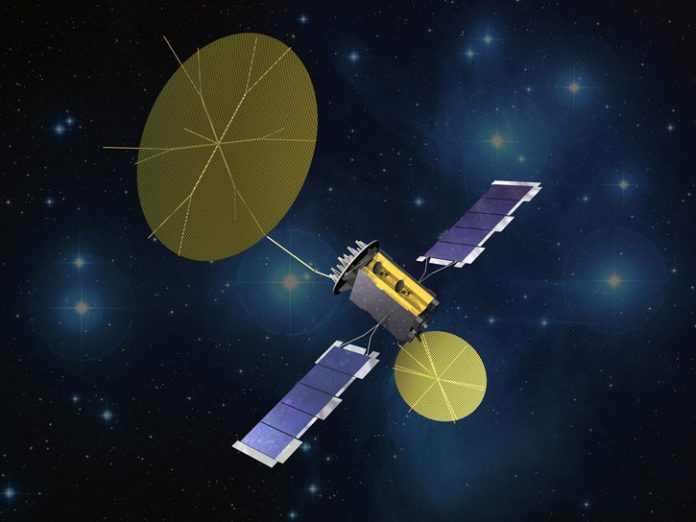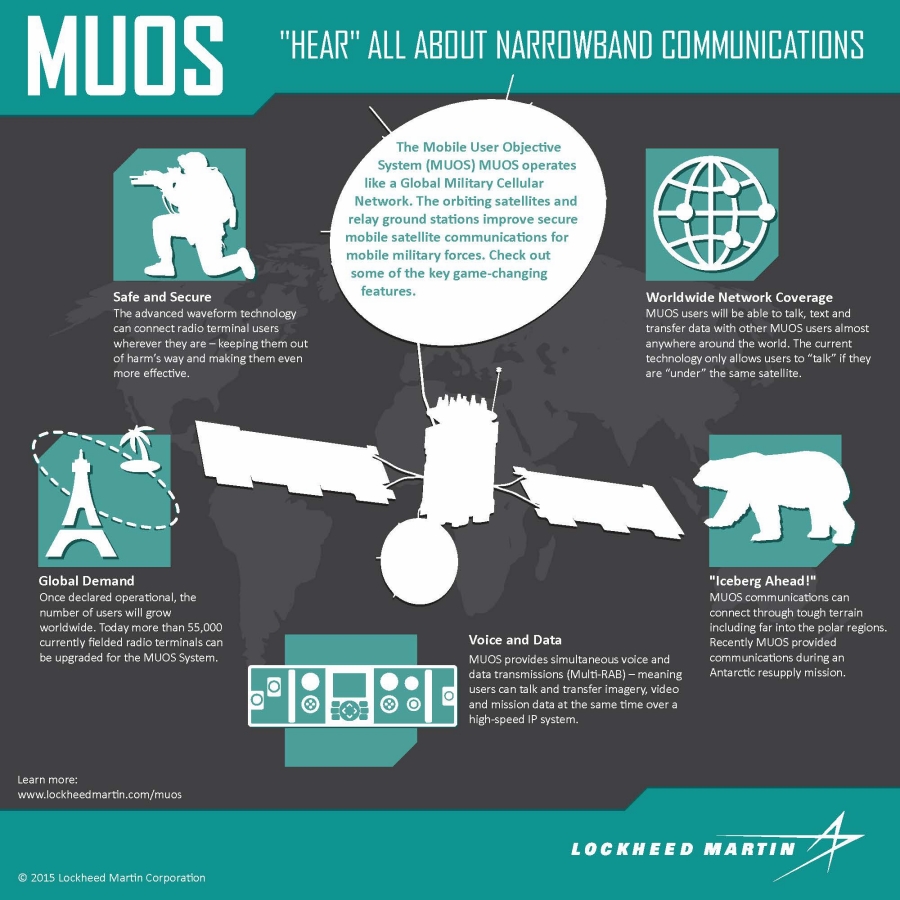
The US Navy’s fifth and last Mobile User Objective System (MUOS) satellite was launched June 24, 2016, aboard a United Launch Alliance Atlas 5 rocket. MUOS is an Internet Protocol (IP)-based system designed to provide improved communications capabilities to users around the world, regardless of where they are in relation to a satellite, and will provide greater than ten times the bandwidth capacity compared with the current ultra-high frequency (UHF) constellation. With near global coverage, the MOUS network will support remote computer access, e-mail, short digital messaging, file and image transfer, and provide an interface for remote reception of sensor data.
[nonmember]

[ismember]The recent launch deployed the final satellite in the five-satellite MUOS constellation, to be used as a spare satellite backing up the four MOUSes already in orbit. The new system will begin testing in July 2016 and should be ready for operation within a year.
With 15-year design life per each satellite, the MOUS constellation and associated network will extend narrowband communications availability well past 2025. The system will transform legacy telephone links into a globally connected IP-based ‘mobile phone’ network, that will support voice, text and data, enabling small units to switch from line-of-sight communications to beyond line-of-sight Satellite Communications (SATCOM).
“The MUOS Wideband Code Division Multiple Access (WCDMA) system provides significantly increased capacity and coverage, superior voice quality and Internet-like capabilities, enabling warfighters the flexibility to better communicate what they need to when they need to,” said Capt. Joe Kan, program manager for the Navy Communications Satellite Program Office (PMW 146). “The system first demonstrated WCDMA voice and data calls via the Army’s Manpack radios in 2013, and we’ve since conducted testing and training with each of the various service branches,” said Jarratt Mowery, director of end-to-end system integration.
MUOS is a system consisting of five satellites, four ground stations across the globe, a network management system, and an integrated WCDMA waveform. The first four MUOS satellites are already operational via their legacy payloads, providing UHF satellite communications (SATCOM) for the DoD and mitigating potential gaps in UHF communications capabilities. The system’s WCDMA capability, currently in its test and evaluation stage, employs advanced third-generation cellular technology adapted for military SATCOM.
 [/ismember]
[/ismember]



















